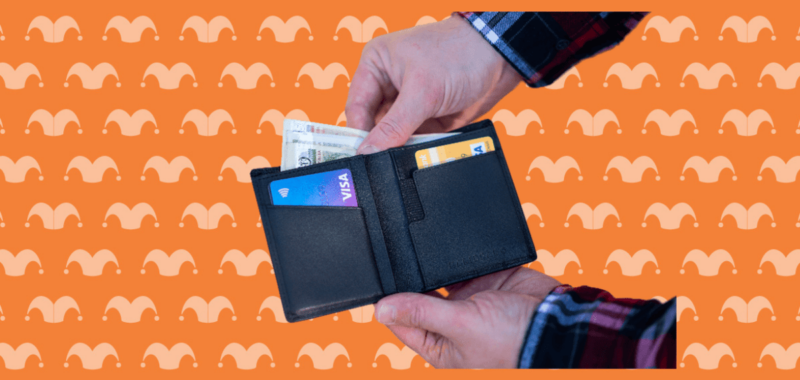Many Americans struggle to save money, don’t have an emergency fund, and don’t have any cash left at the end of the month to get to payday. This way of life is known as “living paycheck to paycheck.”
Living paycheck to paycheck is nothing to be ashamed of, but it can be stressful. If you’re in this situation, take heart: you are not alone. Recent research from PYMNTS Intelligence found that as of April 2024, 62% of Americans were living paycheck to paycheck.
And barely having enough money in your checking account to get to payday is not just for lower-income people or young adults who are still learning financial literacy. PYMNTS also found that higher earners are vulnerable: 48% of people earning $100,000 or more, and 36% of people with incomes higher than $200,000 per year, are living paycheck to paycheck.
Let’s look at a few reasons why Americans can’t stop living paycheck to paycheck — and how to make long-term improvements in your personal finances.
1. Income is too low
PYMNTS Intelligence research found that, among people who are living paycheck to paycheck, one of the biggest reasons was insufficient income. And it’s not just lower-income people who feel like their income is too low. Even higher-income people (earning over $200,000 per year) feel underpaid.
Here is the percentage of people living paycheck to paycheck, at each income level, who said the biggest reason for their predicament is “insufficient income“:
- 40.1% of people who earn less than $50,000 per year
- 25.3% of people earning $50,000-$100,000
- 16.4% of people earning $100,000-$200,000
- 21.4% of people earning more than $200,000
Sometimes people with higher incomes still struggle to save. Lifestyle creep” (buying a bigger house, nicer car, newer clothes, pricier vacations) can kick in with higher income, and if you’re not careful, you could end up with nothing left in your checking and savings accounts.
Are you tired of living paycheck to paycheck? No matter how much money you make, you should consider opening a high-yield savings account. Click here to see our list of the best high-yield savings accounts that will help maximize your savings by paying competitive APYs.
2. Inflation is (still) too high
During the past few months of 2024, the official economic data has shown an encouraging trend: inflation is coming down. The sky-high price increases that caused so many Americans to feel stressed-out and triggered at grocery stores and restaurants seem to be coming down. Lower inflation data gave the Federal Reserve confidence to cut interest rates by half a percentage point in September 2024.
Unfortunately, many Americans aren’t feeling any happier about inflation. Another recent survey from PYMNTS Intelligence in August 2024 found:
- 70% of American consumers (and 77% of Americans living paycheck to paycheck) said their income has not kept up with inflation
- Nearly 75% of Americans believe that restaurant prices are still rising
- 71% believe that gas prices are still going up
If you feel like your monthly bills are out of control, it’s easy to get paralyzed by fear and indecision. Take back control with the best budgeting apps. These apps can help you visualize your spending, see where your money goes, and clearly understand how much your grocery budget costs — and where you can find new ways to save.
3. Too much non-essential spending
Some people get into financial stress from high monthly fixed costs of living that are beyond their control, like rent and auto insurance, or emergency expenses like car repairs and medical bills. But PYMNTS Intelligence research also found that a surprising number of people who live paycheck to paycheck are in this situation because of choices they made about how to spend their money.
Here is the percentage of people living paycheck to paycheck, at each income level, who said the biggest reason is “non-essential spending”:
- 7.3% of people who earn less than $50,000 per year
- 12.1% of people earning $50,000-$100,000
- 16.1% of people earning $100,000-$200,000
- 12.3% of people earning more than $200,000
Chances are, even if you’re a lower-income earner, you can find some ways of making different choices about your spending each month. Don’t fall into a self-sabotaging pattern of “doom spending,” where you just mindlessly spend money even if you can’t afford to. Higher-income earners should also re-evaluate their spending choices. Ask yourself:
- How much could I save if I canceled my streaming subscriptions and cooked every meal at home for two months?
- Would I rather go on a friends’ weekend trip, or have $2,000 in the bank?
- Could I buy a cheaper car, vacation closer to home, or delay a big home renovation?
Sometimes a few small choices add up to a big number in your savings account.
Bottom line
You don’t have to stay stuck on the treadmill of living paycheck to paycheck. Earning a decent yield on your savings can help inspire you to cut your spending and save more cash. Find a high-yield savings account and see where your money can grow — you might get energized to save more and build up an emergency fund!

